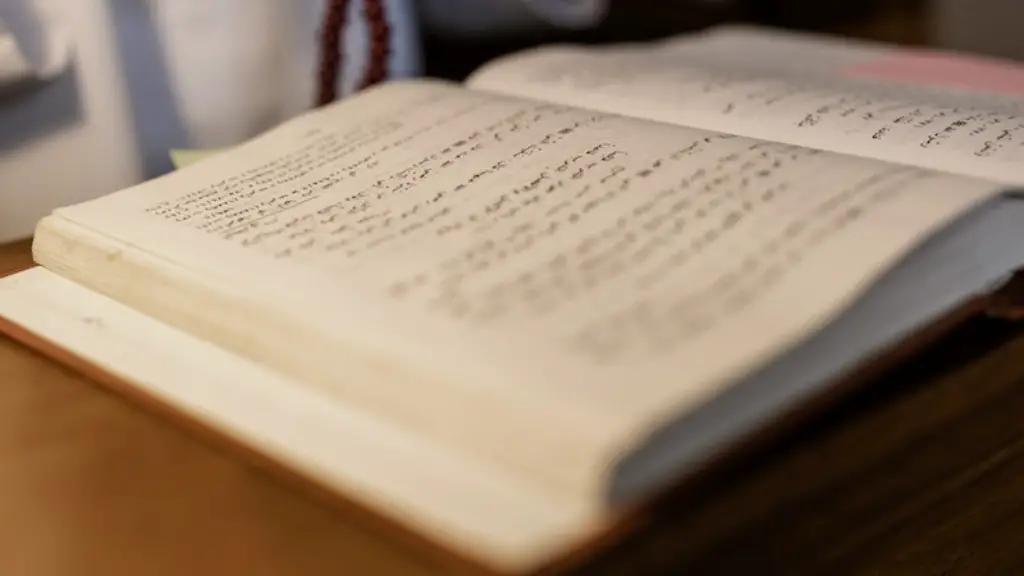Love Defined
“How do I love thee? Let me count the ways…” Elizabeth Barrett Browning’s famous poem, written in 1845, has captivated readers for over a century and a half. It is renowned for its expression of love – but what does it mean to love someone?
Love has been defined in many ways by different cultures, religions and societies. The Greeks believed that love was composed of four primary subcategories: Eros (sexual love), Philia (brotherly love), Storge (family love), and Agape (unconditional love). However, it is commonly accepted that love is composed of more than just these four components, and that it is in fact, limitless in its capacity.
It has been suggested that love should be viewed through a lens of action, choice and awareness. According to this perspective, it is essential to recognize the concept of loving, the practice of loving and the awareness of love in order to understand it. Simply engaging in an act of love does not mean that one is in a loving relationship – instead, it is about making a conscious choice to love despite fear, uncertainty or vulnerability.
Context of the Poem
The context of the poem provides a key insight into its meaning. In 1845, Elizabeth Barrett Browning was married to Robert Browning, a poet with whom she had met and exchanged correspondences secretly. Browning was born into a wealthy family and her father was notoriously strict, forbidding any of his children to marry. Barrett Browning defied her father’s wishes and took control of her own destiny by marrying her beloved Robert, which is believed to be the catalyst for this poem.
The poem is addressed to her husband and it is dedicated to her love for him. Barrett Browning’s words demonstrate the courage and self-belief she possessed to make difficult choices that defied convention. It reflects an intense passion and profound understanding of love. Through this poem she expresses her love for her husband in a way that is both tangible and beautiful.
Rhyme Scheme and Language
The poem is written in sonnets, with a strict rhyme scheme of abba abba cde cde. Despite being so structured, the language used in each line is vivid and passionate. The poem is filled with romantic words such as ‘Thy sunshine smiles’, ’mountain height’ and ‘hearts emblazoned’. It is also filled with an invigorating sense of energy and purpose that comes not only from the vivid descriptions, but the underlying desire to declare her love. The repeated words and phrases give the poem a harmonious rhythm that reflects the continuity of love.
Towards the end of the poem, Barrett Browning writes “I shall but love thee better after death”. This suggests that the love she has for her beloved will remain even after her death, which is a powerful message of undying devotion and commitment.
Modern Relevance
The poem is as relevant today as it was when it was first written. In today’s world, it’s easy to forget the importance of love and to become caught up in the daily hustle and bustle. This poem serves as a reminder of the power of love, and that it should not be taken for granted. It serves as a reminder to take the time to appreciate and nurture our relationships with those we care about.
It can also be seen as symbolic of the journey of self-discovery and empowerment that everyone should experience in their lifetime. The poem serves as a reminder that self-love is essential and that we should strive to be the best version of ourselves before we can hope to share our lives with someone else.
Summary
In Elizabeth Barrett Browning’s poem “How Do I Love Thee?”, she expresses her intense love for her husband, Robert. The poem is a powerful testament to the power of undying devotion and commitment, and its message is still relevant today. It serves to remind us of the importance of love, and to take the time to nurture and appreciate our relationships with those we care about. In addition, it can be seen as symbolic of the journey of self-discovery and empowerment that everyone should experience in their lifetime.
Metaphorical Language
The poem conveys its message through the use of metaphorical language and symbolism. By using metaphorical language, Barrett Browning is able to capture the depth of her feelings through vivid descriptions of her emotions. For example, her love is represented as “an ever-fixing mark” and is compared to the vastness of the sea in the line “I love thee to the level of every day’s Most quiet need, by sun and candlelight.”
The poem is also filled with symbols that represent the love that Barrett Browning has for her husband. For example, the “million shocks” of love are a metaphor for the joys and challenges that come with having a long-term relationship. Similarly, the “gravity” of love is representative of the strength and security that comes from these deep connections.
Structure and Meaning
The poem has a very structured form, where each line follows a certain rhythm and rhyme scheme. This structured form helps to emphasize the importance of the meaning behind the poem. Each line is filled with vivid imagery and meaning, which helps to capture the poet’s feelings and the depth of her emotions. The poem’s structure and language also serve to emphasize the powerful message of love and devotion that she is conveying.
Allusions
The poem is filled with allusions to the Bible, nature, and Greek mythology. For example, Barrett Browning alludes to the Bible when she writes “I shall but love thee better after death”. This line demonstrates her faith in the concept of eternal love, in spite of death. Similarly, by referring to Greek mythology, Barrett Browning implies that her love is timeless, like the River Nile, which was said to have been the source of all life.
Conclusion
Elizabeth Barrett Browning’s poem “How Do I Love Thee?” embodies the timelessness of love. It powerfully expresses the idea that love is an ever-evolving, continuous journey. It demonstrates the courage and self-belief it takes to make difficult choices that defy convention and captures the depth of her emotions with vivid imagery and symbols. The poem serves as a reminder of the power of love and to take the time to nurture and appreciate our relationships with those we care about.



